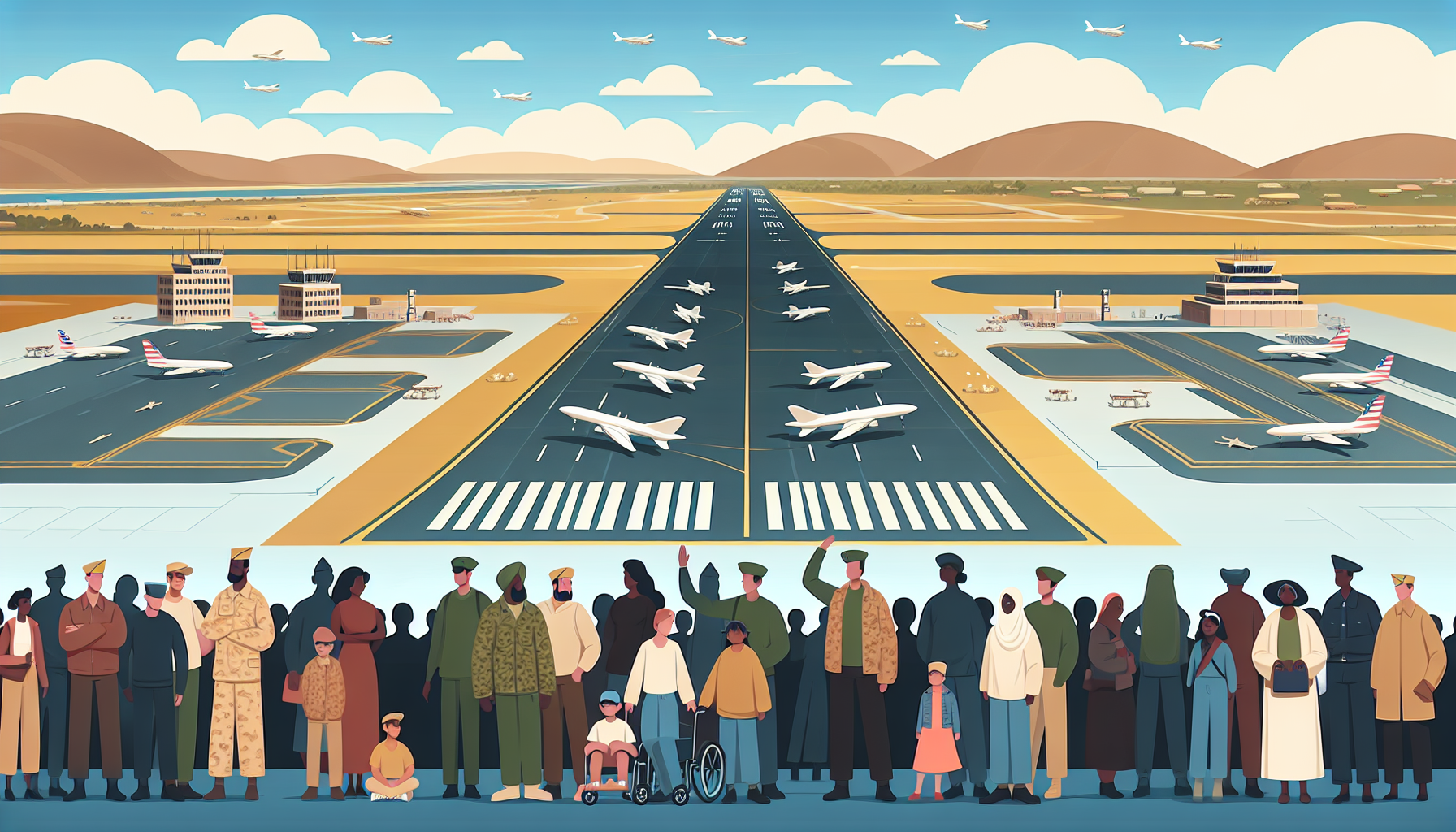Definition
A dispersal airfield is a secondary airfield used by the military for the purpose of reducing congestion and becoming less targetable by enemies during a time of conflict. It’s designed for operations during situations where the primary airfields may be compromised. These airfields allow military aircraft to take off, land, and be serviced without the risk of overcrowding or being easily targeted.
Key Takeaways
- A dispersal airfield refers to an alternate, backup location for military aircraft operations. It’s used when main operational bases are under threat or have been compromised.
- The main purpose of a dispersal airfield is to spread military aircraft over a wider area, minimizing the risk of them being wiped out in a single attack. Therefore, they play a crucial role in military strategies and defense mechanisms.
- Dispersal airfields are generally equipped with essential facilities for operations, maintenance, and rearming of aircraft, albeit usually on a smaller scale than main bases. They are situated at a safe distance from primary bases to avoid any simultaneous attack.
Importance
The term “dispersal airfield” holds significance in military operations as it refers to an alternate airfield used to disperse aircraft strategically to prevent potential losses in case of an enemy attack on primary airfields.
It allows for spreading out or detailing of military aircraft to various locations, reducing the chances of multiple aircraft being destroyed in a single strike.
These airfields are crucial to maintaining aircraft survivability and ensuring the continuation of operations during periods of conflict.
They serve as a vital component of military strategies aimed to minimize damage and safeguard valuable resources.
Explanation
Dispersal airfields play a crucial role in military operations, primarily for the purpose of safeguarding military aircraft from attacks. In essence, they serve as secondary or backup airfields, usually located in relative proximity to the main airbase, but strategically spread around to help disperse aircraft and thus minimize potential damage from a concentrated attack.
By distributing aircraft across multiple sites rather than confining them to one location, military forces can substantially reduce the risks associated with single-point attacks. During periods of escalated threat or actual war, these disperse airfields can be utilized to prevent the enemy from disabling an entire fleet or air operation with just one successful strike.
In addition to protecting valuable military resources, dispersal airfields also represent an adaptive measure for execution of effective military operations. These extended airfields provide the military with alternative options for takeoff and landing, which can be crucial when the primary airbase is under attack or is rendered inoperable for any reason.
They also facilitate the strategic positioning of aircraft for speedy response to changing battle conditions, thus ensuring that air power can be readily deployed as needed. Thus, from both defensive and offensive viewpoints, dispersal airfields are vital components in military aviation strategy.
Examples of Dispersal airfield
Al Asad Airbase, Iraq: During the Iraq War, US military used Al Asad Airbase as a dispersal airfield. The airfield was designed to host an array of aircraft operations, ensuring their principal airfields were not congested and providing protection against potential attacks on primary bases.
RAF Sculthorpe, UK: During the Cold War, RAF Sculthorpe in England served as a dispersal airfield for the U.S. Strategic Air Command, playing a key role in dispersing aircraft to minimize potential damage from a nuclear attack.
Forward Operating Base Shank, Afghanistan: This airfield was heavily used by the U.S. military during the War in Afghanistan as a dispersal site. It allowed for the decentralization of aircraft, minimizing chances of catastrophic losses from a single attack, and ensuring continued air operations in case main airbases were attacked.
FAQs on Dispersal Airfield
What is a Dispersal Airfield?
Dispersal Airfields are secondary airports utilized in military operations for aircraft to land and take-off when primary airfields are under attack or not operational. They are strategically built to ensure continuity in operations during inopportune situations.
What is the significance of a Dispersal Airfield in military operations?
Dispersal Airfields play a vital role in military operations. They enable aircraft to continue functioning in a war-like situation, by providing an alternative landing and take-off location, should the primary airfield be compromised. These airfields are kept ready at all times to support military operations instantly.
How are Dispersal Airfields designed?
Dispersal Airfields are designed to handle both routine and emergency situations. They contain requisite infrastructure including runways, landing systems, communication systems etc. They are typically smaller than main airfields, and located within a feasible distance from the main airfield to allow for swift repositioning of aircraft.
Are Dispersal Airfields used only in times of war?
No, Dispersal Airfields are not solely used in times of war. They can also serve other purposes like training, testing new aircraft, or managing civil aviation traffic, depending on the policies of the specific military organization.
Related Military Operation Terms
- Veteran Compensation
- Disability Benefits
- Military Pension
- Health Care Eligibility
- Education and Training Assistance
Sources for More Information
- Encyclopaedia Britannica – Airport: This article provides information about airfields and their functionalities, including dispersal airfields.
- Military Factory: A site dedicated to military terms, including ‘dispersal airfield’.
- GlobalSecurity.org: A reliable source that offers in-depth information on military systems and aircraft facilities, including dispersal airfields.
- Air University (US Air Force): The official educational system site of the U.S. Air Force. Although it may not have specific articles about ‘dispersal airfield’, it could offer relevant context and surrounding information.
 Benefits.com Advisors
Benefits.com Advisors
With expertise spanning local, state, and federal benefit programs, our team is dedicated to guiding individuals towards the perfect program tailored to their unique circumstances.
Rise to the top with Peak Benefits!
Join our Peak Benefits Newsletter for the latest news, resources, and offers on all things government benefits.




















